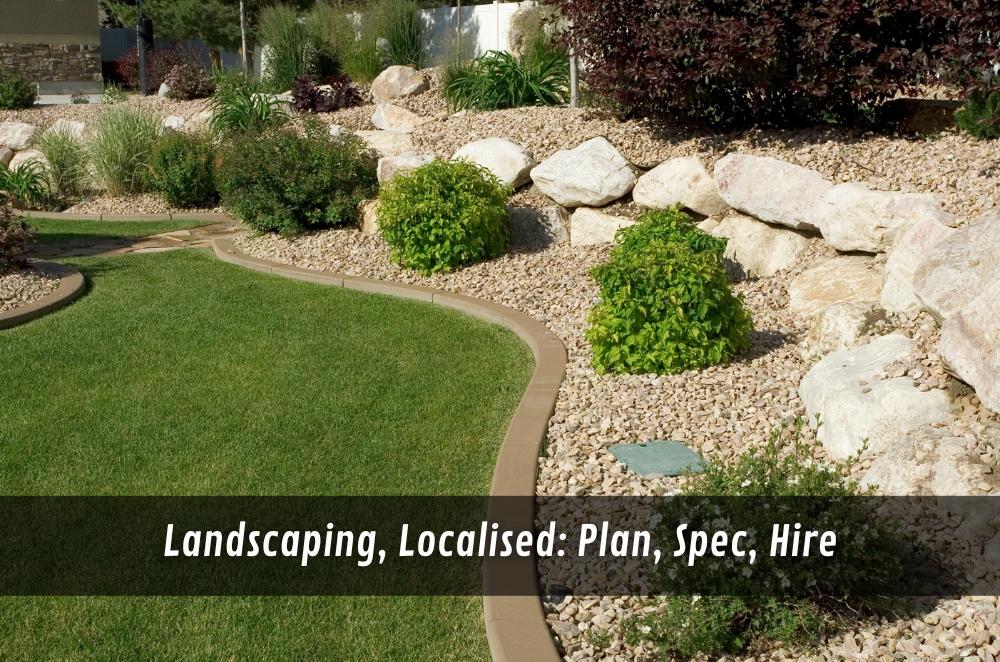Landscaping, Localised: Plan, Spec, Hire

Most landscape jobs go sideways for boring reasons: no clear brief, wrong order of work, rushing the finish. Seen it too many times. If you’d rather hand it off and keep weekends free, a quick look through “professional landscaping services near me” will give you a feel for the scope and pricing while you read. If you’re keen to steer your own project, here’s a practical run-through — plain language, a few field notes, no fluff.
Start with outcomes, not products
Forget plant lists for a moment. What do you want the space to do?
-
Use it like a map. School-bag drop zone by the back door? A quiet coffee perch that actually gets winter sun? A dog sprint lane that won’t turn to mud? Write it down.
-
Maintenance truth. Two hours a month? Be honest. Choose plants and surfaces that suit you, not Instagram.
-
Budget bands beat single numbers. Give your designer a band (say $25–35k). You’ll get smarter proposals, faster.
-
List the constraints. Slope, neighbours’ windows, drainage issues, and tree roots. These drive design more than the tile you fancy.
Tiny terrace in Marrickville: client asked for “lush, not fussy.” We cut the palette to three hero species, fixed a soggy path with permeable pavers, and slid a bench 600 mm to steal winter light. Same dollars. Way better mornings.
Know when you need a licensed pro
“Landscaping” can mean plants one day and a retaining wall the next. Different rules. In NSW, structural landscaping (retaining walls, decks with footings, pergolas tied down, drainage systems) needs the right licence class. Before you sign anything, make sure the contractor’s licence matches the scope and the name on the quote. For a quick explainer of what’s covered, see structural landscaping work.
Quick checks (five-minute due diligence)
-
Licence and ABN align with the trading name on the quote.
-
Structural bits (walls, decks, footings) are clearly separated from “softworks” (planting, mulch).
-
Insurance sighted.
-
“Dial Before You Dig” and services located before a shovel hits dirt.
Write a one-page brief (yes, one page)
Good briefs make better gardens. You don’t need a novel.
-
Photos and scribbles. Snap corners, views from the kitchen, the weird downpipe.
-
Must-haves vs nice-to-haves. If money gets tight, you’ll know what to drop.
-
Materials shortlist. Two or three that play nicely: e.g., sawn sandstone + charcoal pavers + painted steel.
-
Lighting intent. Safety first (steps, entries), then a couple of accents (feature tree, wall wash).
-
Irrigation idea. Turf, beds, and pots each in their own zone. Simple beats clever.
If you want to see how designers turn briefs into concept drawings and planting palettes (and where the 3D visuals help, not hurt), park this and read architectural landscape design.
Design with climate and street context
Great gardens look like they belong there. That’s not luck.
-
Sun map: 9 am / 1 pm / 4 pm, summer and winter. Draw it. Put seating where it works in both seasons.
-
Wind and heat: Break hot westerlies with hedging or open battens; keep airflow — don’t build an oven.
-
Drainage: Give water somewhere to go. Clean falls, gravel “soak lines”, generous garden area.
-
Plant layers: Canopy (small tree), shrubs, fillers, groundcovers. Four layers beat twelve random species.
-
Pets & kids: Tough groundcovers, rounded gravel, and anchoring for posts or nets where needed.
Balmain courtyard fix: a pergola beam nudged the neighbour’s view line. We rotated it 90° and kept the shade on the doors. Twenty minutes on paper. Months of complaints avoided.
Native plants: Easier care, richer feel
Natives aren’t a compromise; they’re a shortcut to a relaxed, modern look with fewer headaches.
-
Match the place to plant. Coastal? Westringia, banksia. Cooler pockets? Correa, Lilly pilly cultivars.
-
Texture stacking. Fine (lomandra) against bold (gymea lily) with a few seasonal sparks (grevillea).
-
Watering logic. Deep and less often. Mulch at 50–75 mm.
-
Wildlife wins. Birds and bees arrive. Feels good. Looks better.
Want a neutral explainer that stays out of brand wars? Check native landscaping.
Build in the right order (so it stays calm)
Chaos shows up when the sequence slips. Keep it boring; boring is good.
-
Prep: locate services, prune or remove, scrape tired soil, set levels.
-
Hardscape first: earthworks, retaining walls, edges, paths, decks, drainage sleeves.
-
Soils & structure: import topsoil to spec, compact where pavers meet beds.
-
Irrigation install: pressure/flow tested, zones labelled.
-
Planting: set out by mature size, not pot size; water in properly.
-
Mulch & finish: 50–75 mm in beds; sweep, blow down, tidy.
-
Handover: run the irrigation program; explain pruning and first-summer care.
Ryde path puddles story: we paused after the first decent rain to watch how water moved. One tiny fall tweak and an extra pit. No more lake. Ten minutes now beats a call-back in January.
What actually moves the budget
It’s not the pot size that gets you — it’s the hidden stuff.
-
Access & earthworks: tight lanes, crane time, rock, spoil removal.
-
Hard vs soft ratio: pavers, walls, decks chew money. If needed, trim hard surfaces and grow more green.
-
Spec swaps: step down one grade on pavers, improve soil instead. You’ll feel it every day.
-
Irrigation: simple, zoned, reachable controller. Clever systems you never touch don’t help.
-
Lighting: safety first. Pretty late.
Maintenance rhythm (small, regular wins)
-
Weekly: fast wander with secateurs; flick dead bits, check irrigation, brush debris off paths.
-
Monthly: edge lawns, top up thin mulch, clear drainage grates.
-
Seasonal: spring feed for hungry plants, prune after flowering, oil decks before summer.
-
Annually: lift and relay drifted pavers; replace gaps with plants you know you’ll actually look after.
When to bring in a pro (and what to ask)
If your plan includes retaining walls, raised decks, or tricky drainage, early help saves rework. Shortlist a couple of teams and ask for:
-
A scaled concept plan with levels and materials.
-
Proof of the right licence class for structural bits, plus insurance.
-
A staged programme with hold points (set-out, drainage, irrigation test, planting).
-
A clean plant schedule (species, sizes, quantities) so quotes are comparable.
If you decide the weekend should stay… a weekend, short-list via professional landscaping services and ask each bidder the same three things: what they’d remove from your scope to save money, what they’d upgrade if you had 10% extra, and what they see as the biggest risk on your site.
Final thoughts
Great landscapes feel inevitable — like they grew there. That comes from a simple loop: clear outcomes, an honest budget, a design that respects your block, and a build sequence that doesn’t race ahead of itself. Keep the maintenance light but steady. Stick to a palette that ages well. And if the job drifts into structural territory, tick the licence boxes early so you’re not fixing paperwork at the end.








